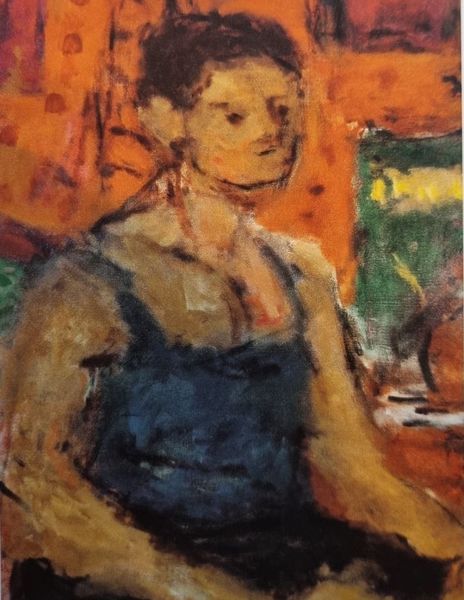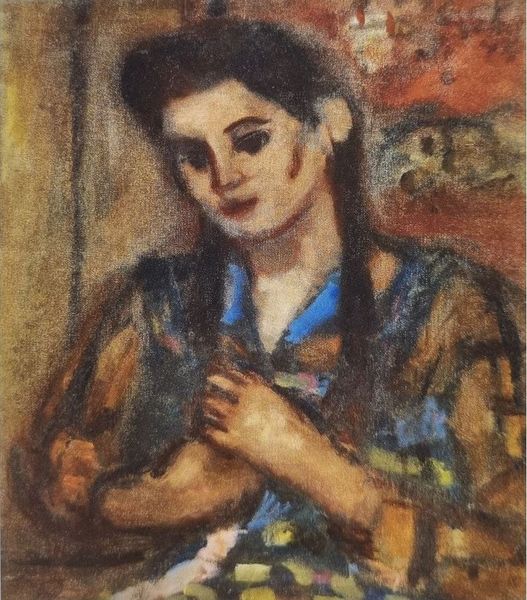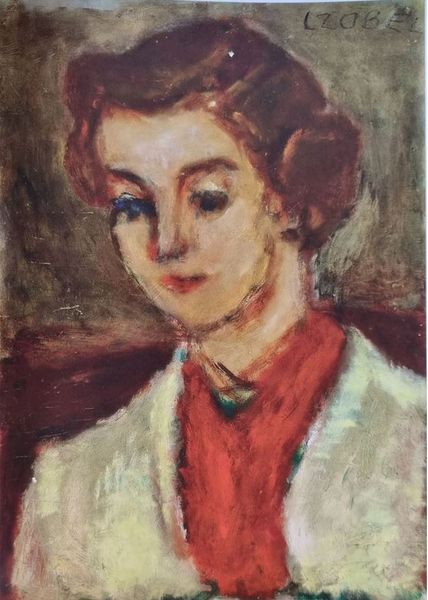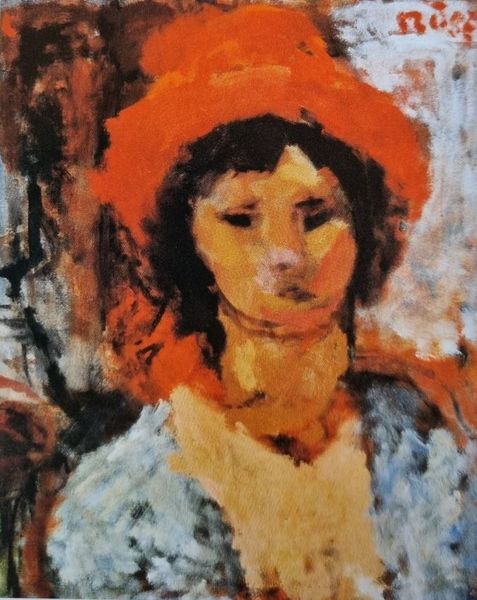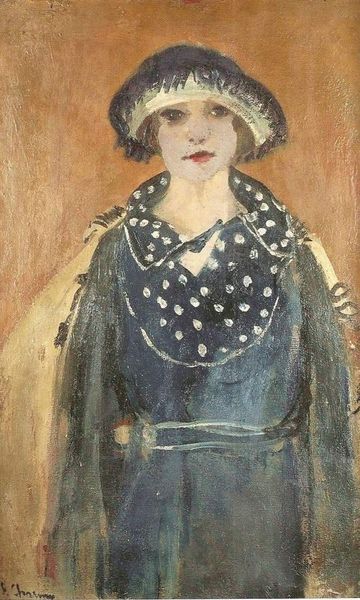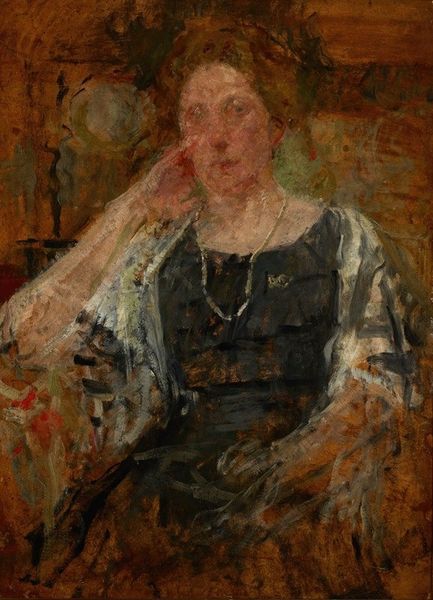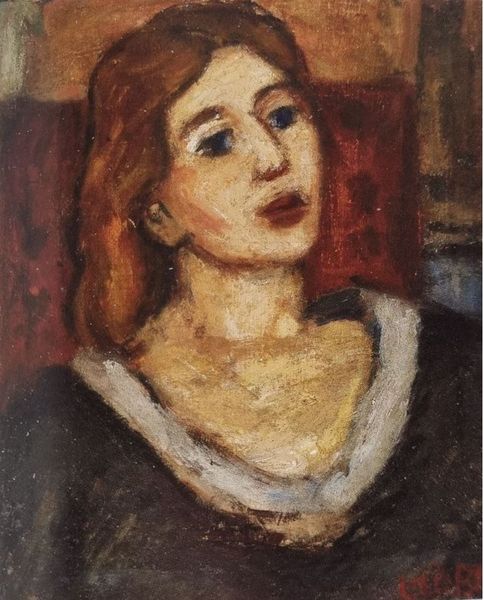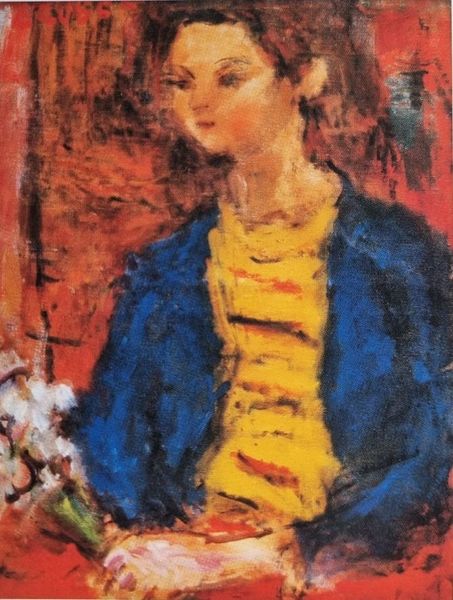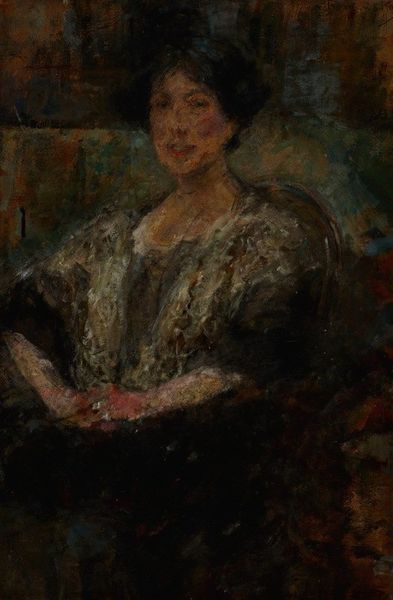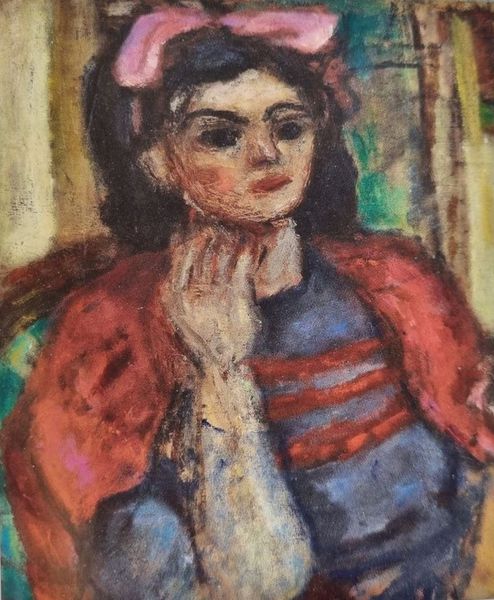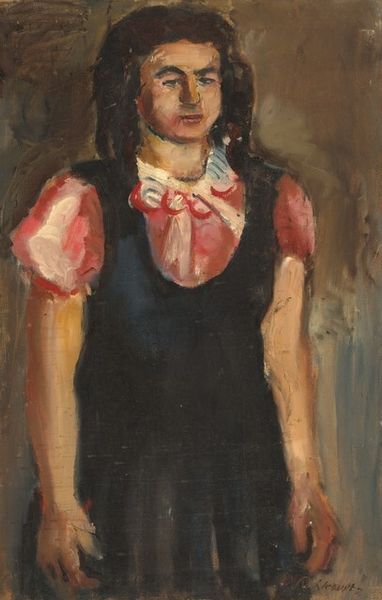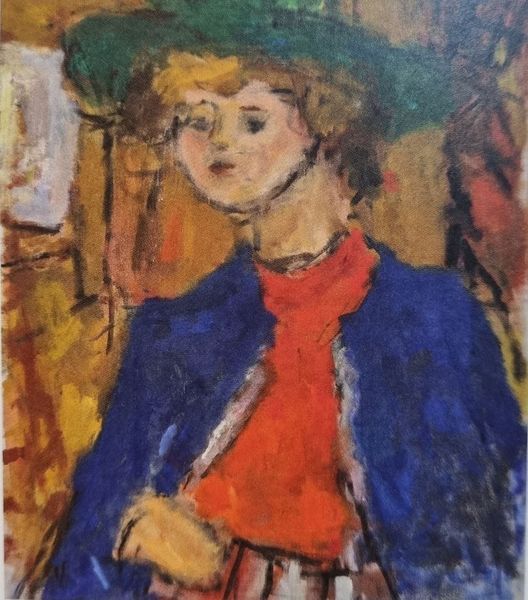
painting, oil-paint, impasto
#
portrait
#
painting
#
oil-paint
#
oil painting
#
impasto
#
expressionism
Copyright: Bela Czobel,Fair Use
Editor: So, here we have "Women with Hat" by Béla Czóbel, an oil painting dating from 1937. I’m immediately struck by the brushstrokes; they're so thick and textured, giving the piece an almost tangible quality. What historical insights can you share about this painting? Curator: Czóbel painted this in 1937, right on the cusp of World War II. Considering that, does the woman’s slightly haunted expression resonate any differently with you? The impasto style, while visually interesting, can also be seen as reflecting the anxieties of the time. Expressionism often grappled with feelings of unease and the unraveling of social order, which connects it directly to the looming global conflict. Editor: That’s a chilling perspective. I hadn’t considered how the social and political climate would infuse itself into the artwork, manifesting as anxiety. Were there specific artistic circles influencing Czóbel then? Curator: Absolutely. He was part of a larger Expressionist movement that consciously broke from traditional aesthetics. Museums and galleries in pre-war Europe played a critical role by exhibiting works that challenged conventional societal values, which simultaneously critiqued and shaped public perception. Do you think the public would have found it jarring? Editor: I imagine so! Seeing art that openly expresses emotional turmoil must have been a departure. I'm beginning to understand the power of art to reflect and shape its context. Curator: Exactly. We are looking at so much more than aesthetics; we're engaging with a piece of history, a cultural artifact, reflecting the turbulence of an era. Editor: I’ll definitely look at Expressionist works with fresh eyes now, thinking about them as products of their time and not just artworks. Thanks!
Comments
No comments
Be the first to comment and join the conversation on the ultimate creative platform.
